Industry News
Our Everyday Heroes – Eye Donation Month
Every November, we observe Eye Donation Month —a time to honor the selfless individuals and families who give the gift of sight and to shine a light on the everyday heroes who make it possible. From donor services coordinators and recovery technicians to hospital partners and cornea donors, this month is about celebration, awareness and legacy. As part of this observance, we’re proud to recognize the everyday heroes of our team whose compassion, professionalism and daily dedication embody our mission of changing lives by saving sight Explore their stories and join us in celebrating the impact of every gift.
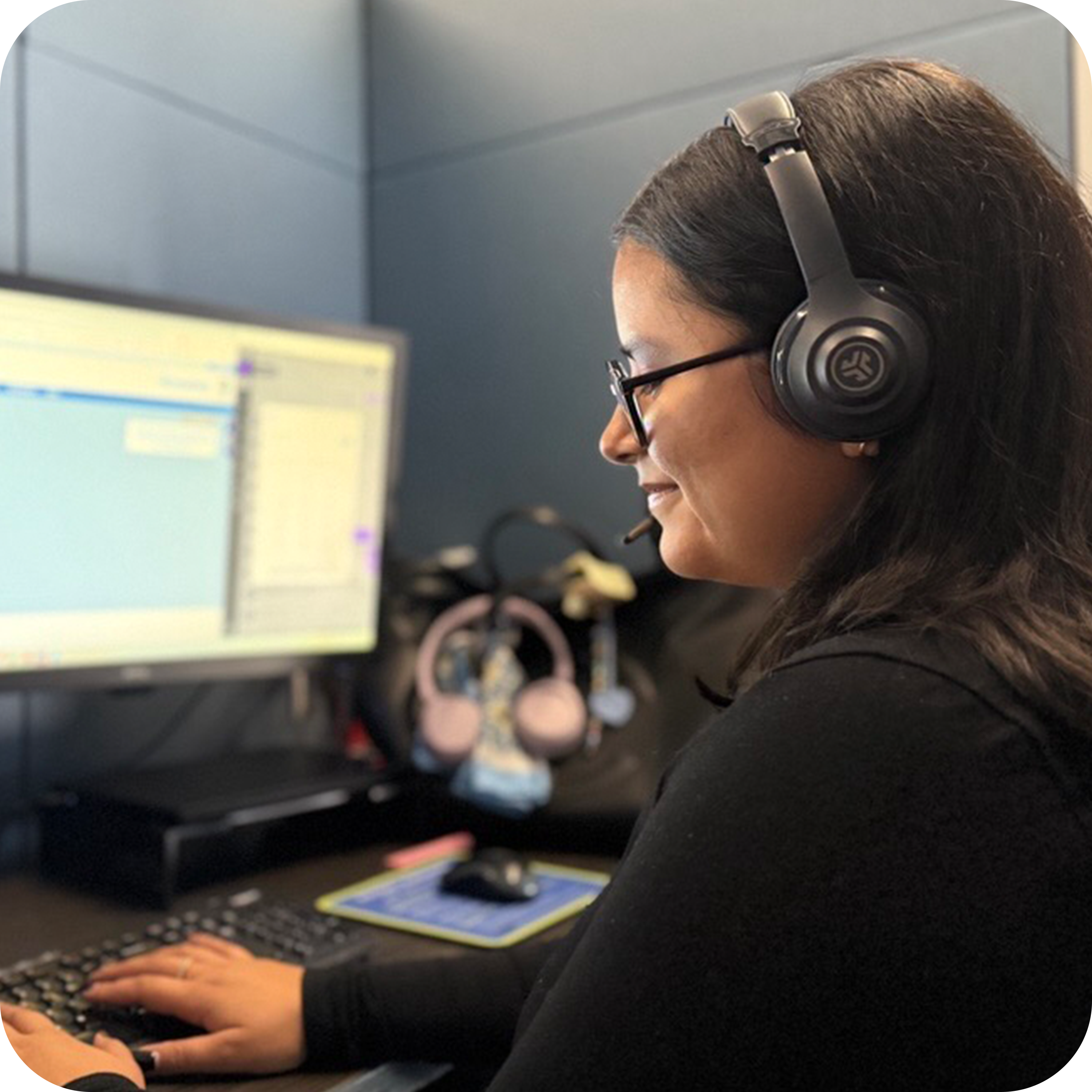
Stephanie Alba
Donor Services Coordinator
Every day at Saving Sight begins with someone like Stephanie, a Donor Services Coordinator who helps make the gift of sight possible through compassion, clarity, and unwavering dedication to our mission of changing lives by saving sight. In her two years with Saving Sight, she has played a vital role at the start of the donation journey, screening potential donors, coordinating with hospitals and funeral homes, and supporting families during some of their hardest moments. For Stephanie, no two days are the same, but her approach never wavers, lead with empathy, stay adaptable, and rely on teamwork. One meaningful moment was when a donor family, moved by their experience, chose to register as donors themselves. For Stephanie, it was a powerful reminder that her role not only impacts recipients today but can inspire future gifts of sight. This Eye Donation Month, we recognize Stephanie and all our Everyday Heroes whose commitment ensures every donor’s legacy shines and more people can experience the gift of sight.

Sarah Plattner
Donor Services Coordinator
For more than four years, Sarah has been a steady, compassionate presence at the heart of Saving Sight’s donation process. As a Donor Services Coordinator, she helps honor the wishes of those who have passed while supporting families with care and understanding during some of their hardest moments. Her days are a blend of clinical decision-making, logistical coordination, and human connection reviewing referrals, assessing eligibility with medical partners, guiding recovery timing, and collaborating closely with funeral homes and hospital staff.
Balancing compassion and professionalism, she approaches every call “carefully and respectfully with sensitivity.” She also relies on her team, “an amazing group” she says, who lean on one another’s strengths to navigate complex cases. What stays with her most are the moments when she reads letters from donor families whose gratitude reminds her why this work matters. To Sarah, the true heroes are the donors themselves, and she feels privileged to help ensure their legacy brings hope and the gift of sight to others.
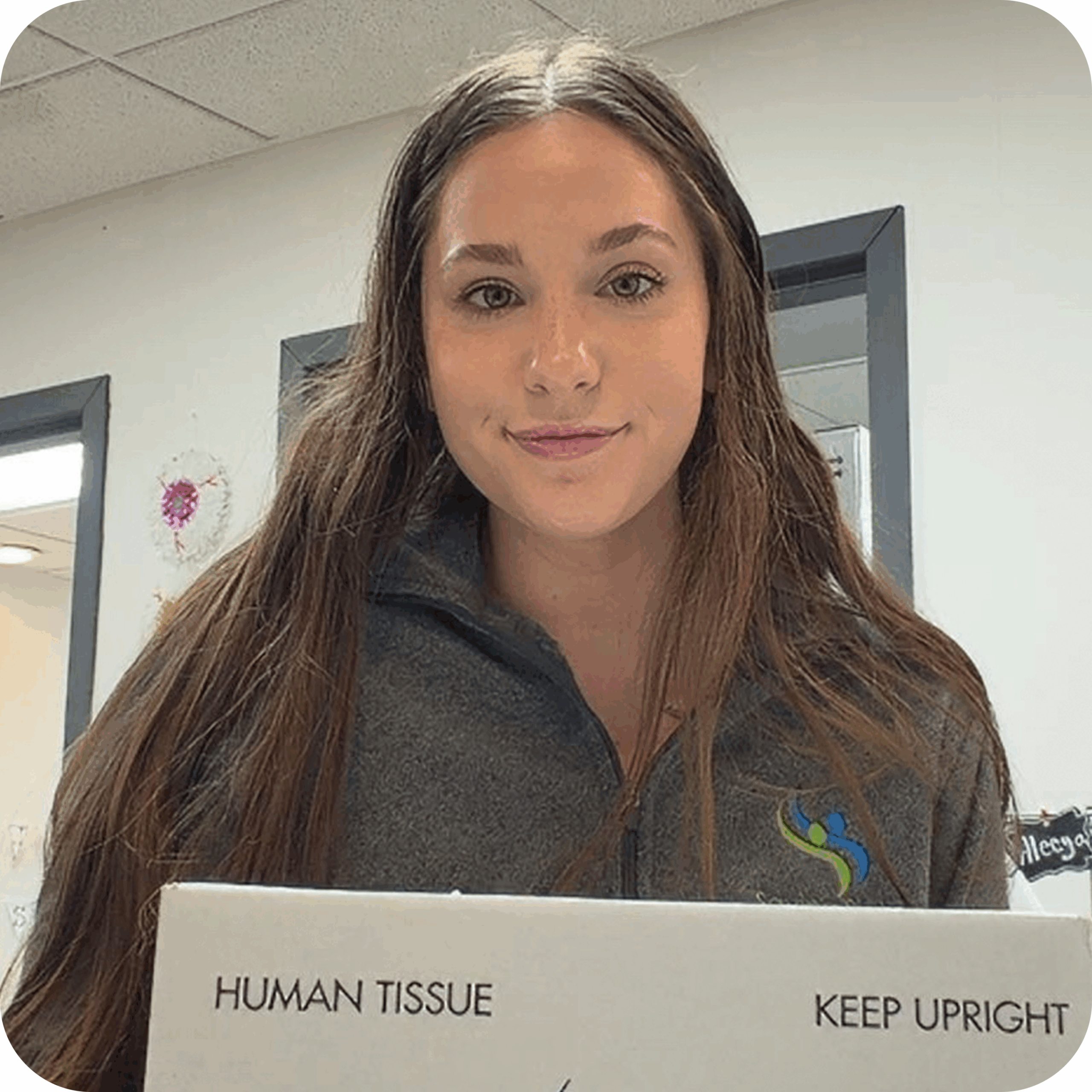
Kalista Huff
Recovery Supervisor
For Kalista, no two days as a Recovery Technician ever look the same and that’s part of what makes her work so meaningful. Some days begin with a call that carries her through a full 12-hour case; other days include a recovery followed by quiet moments of office work. But every day brings the chance to change someone’s life.
Her inspiration for this work is deeply personal, at 15, she watched her father struggle with keratoconus. Witnessing that journey shaped her future in ways she couldn’t have expected. It gave her a profound understanding of what restored sight can mean and lit the spark that now drives her every day.
That sense of purpose is never more present than when she’s scrubbed in. In those moments, her focus narrows to the donor before her and the gift they’re offering. She approaches each recovery with the same care she would want someone to give her own loved ones, focusing on precise technique, quality, and dignity.
To Kalista, being an everyday hero means showing up with skill, compassion, and gratitude, knowing that every action she takes has the power to change someone’s world.
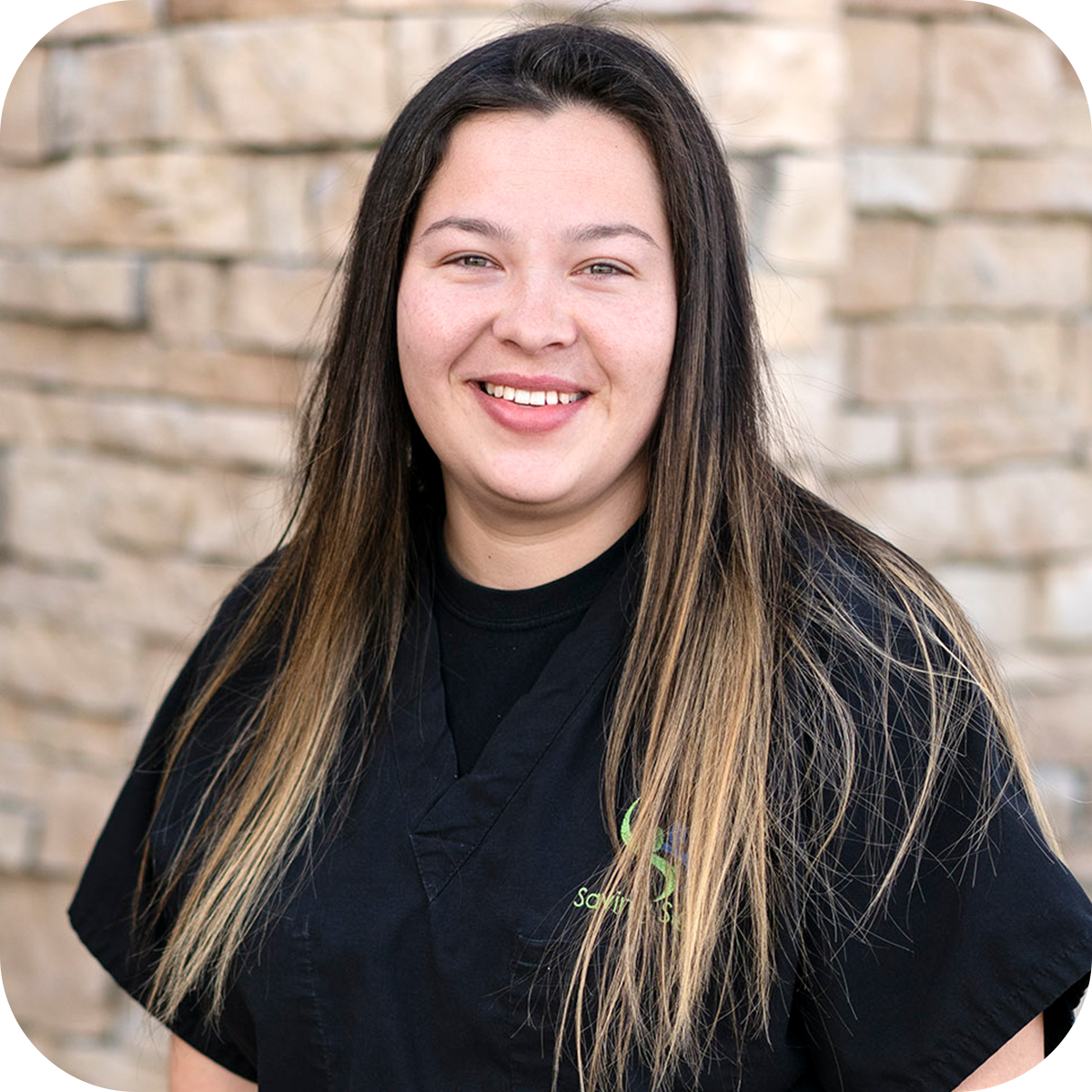
Lauren Brownell
Recovery Technician
For Lauren, no two days as a Recovery Technician are ever alike — a truth she’s embraced wholeheartedly for over 10 years. Each day brings something new, but her purpose remains constant: to honor donors with the utmost dignity and help restore sight for someone waiting for a second chance.
Lauren approaches each recovery with the belief that donors are the true heroes of cornea donation. She treats each donor as though they were in the room with her, watching every step. This mindset grounds her in purpose and guides her commitment to recovering the highest-quality tissue because every cornea is one of a kind, and every recipient deserves the best chance at restored sight.
One of the most profound experiences of her career has been watching corneas she recovered being transplanted. Seeing that moment, the exact tissue she held with care now offering someone renewed sight, is something she describes as indescribably rewarding.
To Lauren, being called an “everyday hero” feels undeserved, she believes that honor belongs to donors and their families. Yet through her compassion, precision, and unwavering commitment, she embodies exactly what it means to help change lives by saving sight.
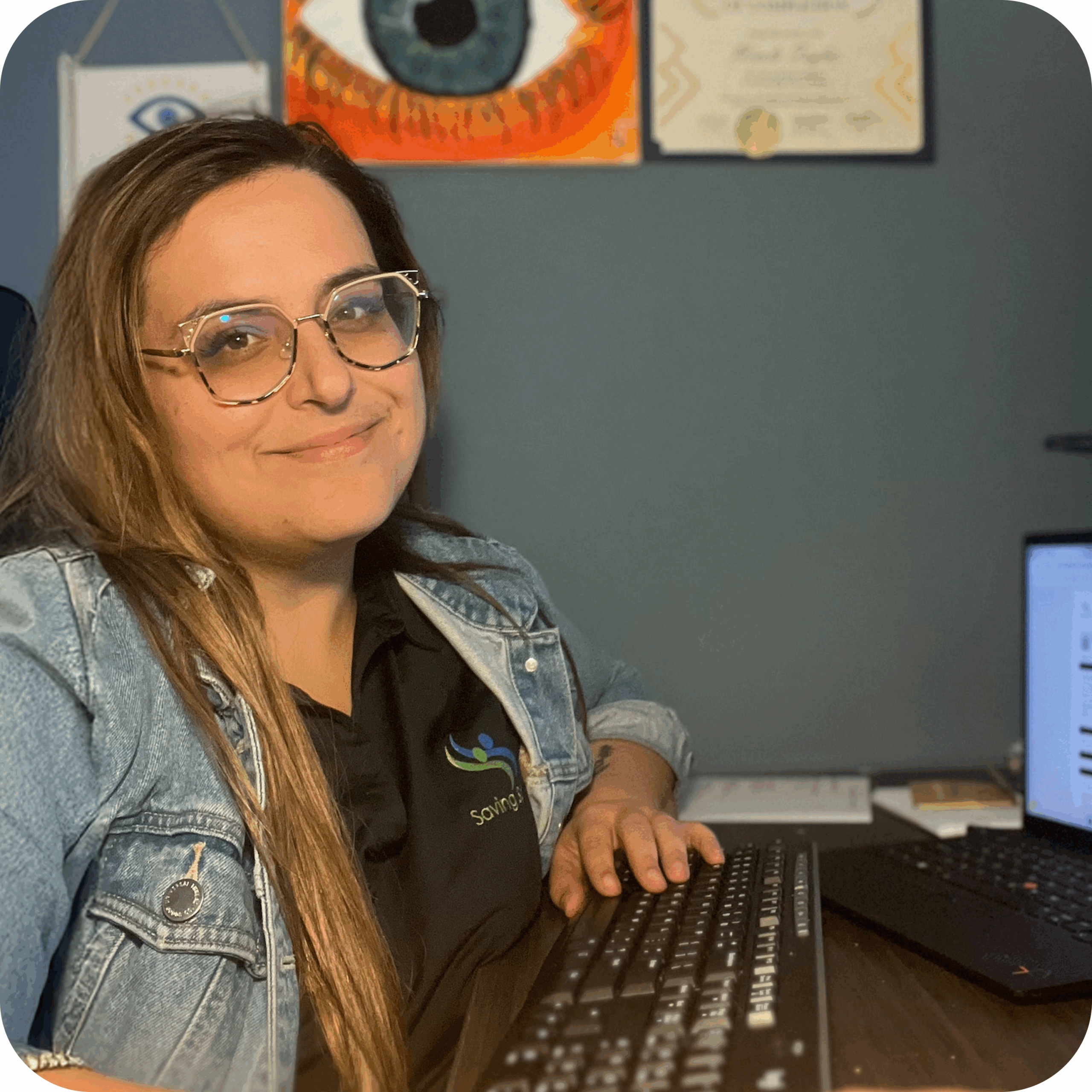
Nicole Taylor
Client Services Specialist
For Nicole, every day is an opportunity to bring donors’ gifts to the people who need them most. As a Client Services Specialist, she helps guide each donated cornea from evaluation to the operating room, coordinating with Medical Review, surgeons, and departments across Saving Sight to ensure every transplant has what it needs to succeed.
What motivates her most is knowing that every task she completes, every phone call, every schedule finalized, and every tissue placement is one step closer to someone regaining the ability to see. She approaches her work with accuracy, compassion, and deep respect for the donor whose gift makes it all possible.
One experience that stays with her is meeting a transplant recipient during a tour at the Kansas City office. He shared how his vision loss had put his life on hold and how receiving the cornea she helped place allowed him to move through the world freely again. Seeing the human impact of her work firsthand was a powerful reminder of why she does what she does.
Nicole believes the true heroes are the donors, but she also sees how her team embodies everyday heroism through their diligence, passion, and teamwork. Together, they ensure every gift is honored and every transplant has the best possible chance to change a life.

Stella Cunningham
Cornea Lab Technician
As a Cornea Laboratory Technician, Stella helps carry each donated cornea through some of its most critical final steps on its way to transplant. Her role ensures that every tissue is evaluated with care, processed with precision, and prepared for delivery to surgeons or research partners.
Lab work is intensely collaborative. No two days are quite the same, and Stella moves between roles depending on what the day requires. One moment she might be evaluating tissue under the microscope, the next she may be preparing grafts for surgeons or packaging tissue for research that will further advance sight-saving techniques. Every task is a meaningful part of honoring a donor’s gift.
For Stella, this work has been both meaningful and personally transformative. As a perfectionist, she once struggled with the weight of processing tissue tied to someone’s legacy. With support from her colleagues, she learned that not every challenge is within her control but her commitment to honoring donors never wavers.
Through every step in the lab, Stella ensures that a donor’s gift is honored and transformed into the life-changing gift of sight. A quiet, yet powerful testament to the everyday heroism that happens behind the scenes at Saving Sight
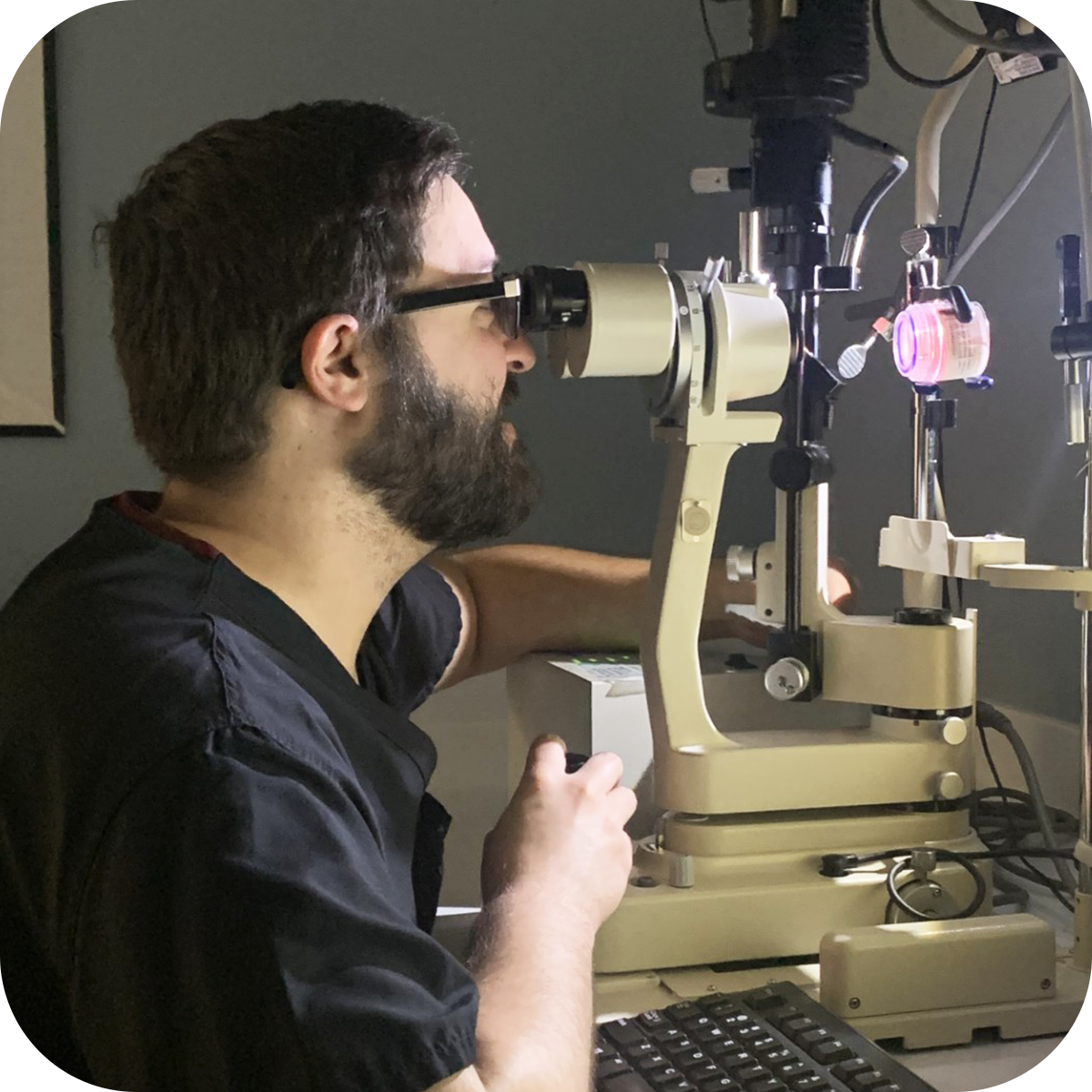
Randall Reed
Cornea Lab Technician
In the journey from donation to transplant, the Cornea Lab is one of the final and most crucial stops in honoring each donor’s gift. For Randy, this work is both a responsibility and a privilege. Each cornea brought in by the Recovery team is carefully evaluated to determine the best type of transplant for each unique tissue.
No two days are ever the same. “Our work is very fluid,” he says. “We have to be ready to switch gears at any moment to honor the donor’s gift and provide consistent quality for recipients.”
Attention to detail and a desire to refine his skills are essential in his role. Randy and his team examine every cornea thoroughly and process grafts to meet the precise needs of surgeons and their patients.
What keeps him motivated is simple: “The most rewarding part is knowing that every cornea we process is going to help someone in need.”
For Randy, being an everyday hero means showing up each day ready for a challenge and doing everything he can to ensure every graft honors the donor and offers hope to someone waiting to see again.
Welcoming New Leadership to the Saving Sight Board
Saving Sight is proud to welcome four new members to its Board of Directors. Each brings unique experiences, professional expertise, and a shared commitment to service that will help guide our mission of changing lives by saving sight.

VCC Rachel Harper
VCC Rachel Harper has been a proud Lion since 2016, serving with the Carrollton Lions Club, the oldest club in Missouri Lions MD26-M4. For 2025–2026, she is honored to serve as District Governor for MD26-M4 and was recently elected Missouri Lions Vice Council Chair. VCC Rachel is especially passionate about learning more about First Gift, our newest tissue donation program, and contributing to its growth. Professionally, she works as a Digital Media Marketing Specialist at Carroll County Memorial Hospital, where she leads digital communications and marketing initiatives.

Lion Aaron Hoeffling, a retired U.S. Air Force veteran, brings more than two decades of leadership experience to the board. After serving in Florida, Alaska, and Korea, he transitioned into civilian leadership roles, most recently as Plant Manager at Zephyr Manufacturing. An active Lion since 2016, Aaron has held several club and district leadership roles and will serve as Vice District Governor in 2026. Inspired by Saving Sight’s mission after attending a board meeting in 2024, he is honored to support the organization’s vision of transforming lives through restored sight
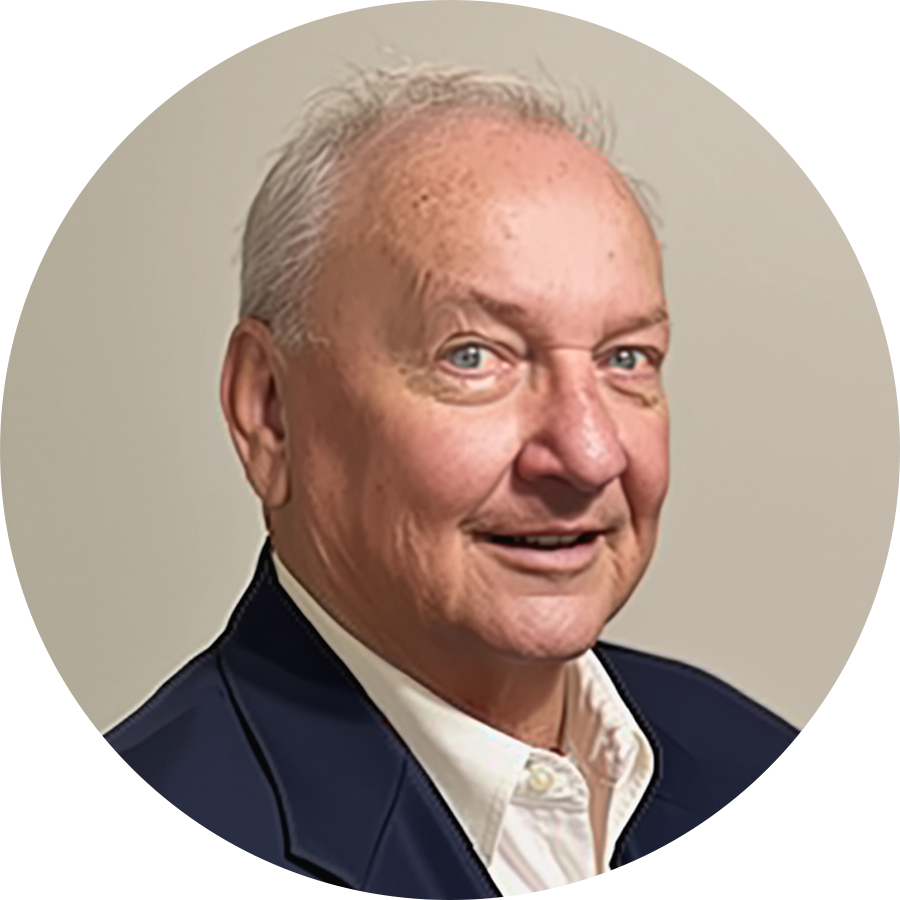
Lion Stephen “Steve” Murray
Lion Stephen “Steve” Murray joins the board with an accomplished career in utility leadership and civic engagement. He held leadership roles with Associated Industries of Missouri, the Greater Kansas City Chamber of Commerce, and multiple energy associations throughout his career. Now retired, Steve continues his service as president of the Carl Junction Lions Club, where he recently led a successful Eye Mission that reached more than 100 local residents and distributed more than 75 sets of eyeglasses. He also serves on the board of directors of the Joplin Association for the Blind and was nominated to Saving Sight’s board in June 2025
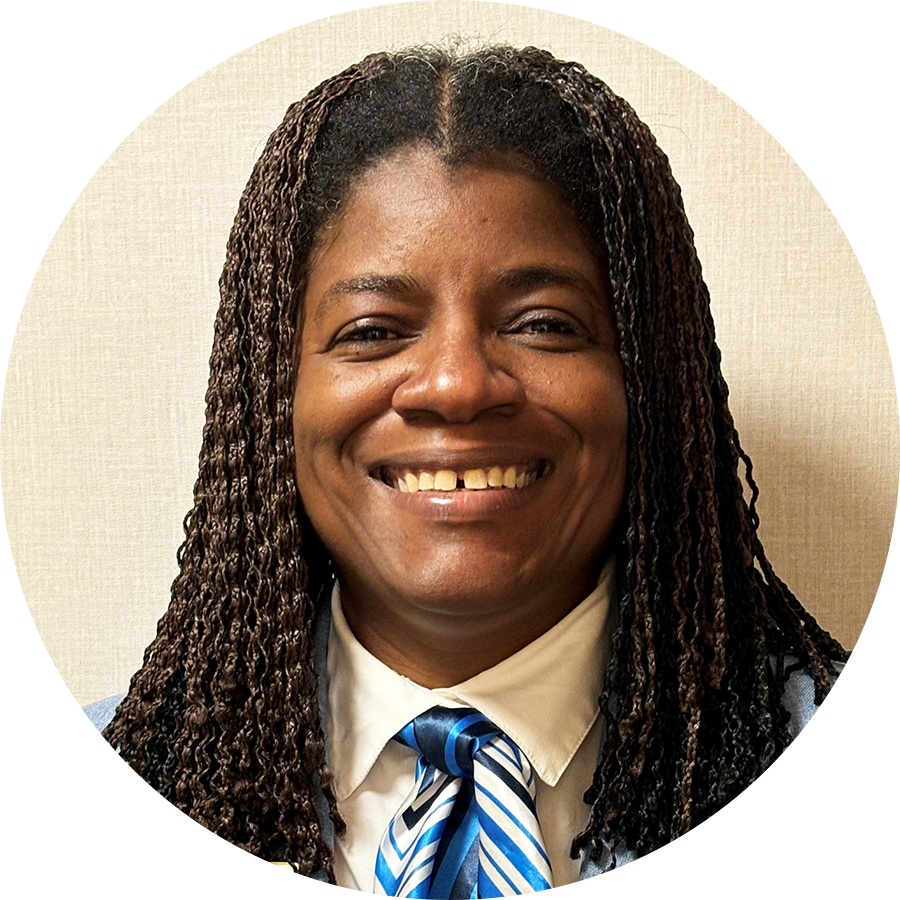
CC Wendetta (Wendy) N. Williams
CC Wendetta (Wendy) N. Williams brings distinguished leadership experience as both a Lion and a veteran.
She is the Council Chairperson for MD-26 Missouri Lions from 2025–2026 and has served in numerous roles within the Fort Leonard Wood Lions Club, including president and treasurer. In recognition of her service, she received the International President’s Leadership Award. CC Wendy retired as a Colonel after 30 years in the U.S. Army Reserves and currently serves as an Operations Research Analyst for the Department of the Army at Fort Leonard Wood, Missouri.
Together, VCC Rachel, Lion Aaron, Lion Steve, and CC Wendy represent a diverse range of leadership, service, and dedication to community. We are excited to welcome them to the Board of Directors and look forward to their guidance in furthering Saving Sight’s life-changing mission.
First Gift – Expanding Our Mission to Change More Lives
Saving Sight is proud to highlight First Gift, a new division within our organization that strengthens our ability to change lives through donation. First Gift represents an important step forward in expanding our impact beyond corneal transplantation and into new areas where donated tissues can bring comfort, healing, and hope.
Through the First Gift program, new and expectant mothers can donate their placental and umbilical cord tissues after birth. These tissues, often discarded, hold powerful healing properties that can be used in a wide range of medical treatments. They support patients receiving ocular therapies and play an important role in helping individuals recover from non-healing skin wounds and serious burns. In many cases, these tissues promote healing that would not otherwise be possible.
Remarkably, just one mother’s donation can help up to 75 individuals regain comfort, mobility, and independence.
First Gift is now established in two partner hospitals, and we look forward to expanding its reach as more hospitals join the program. Each new partnership strengthens our connection to families, enhances the donation process, and allows Saving Sight to serve our communities in new and meaningful ways.
By embracing innovative opportunities like First Gift, we continue to advance Saving Sight’s mission to transform lives through donation and transplantation. To learn more about First Gift and its life-changing work, visit the
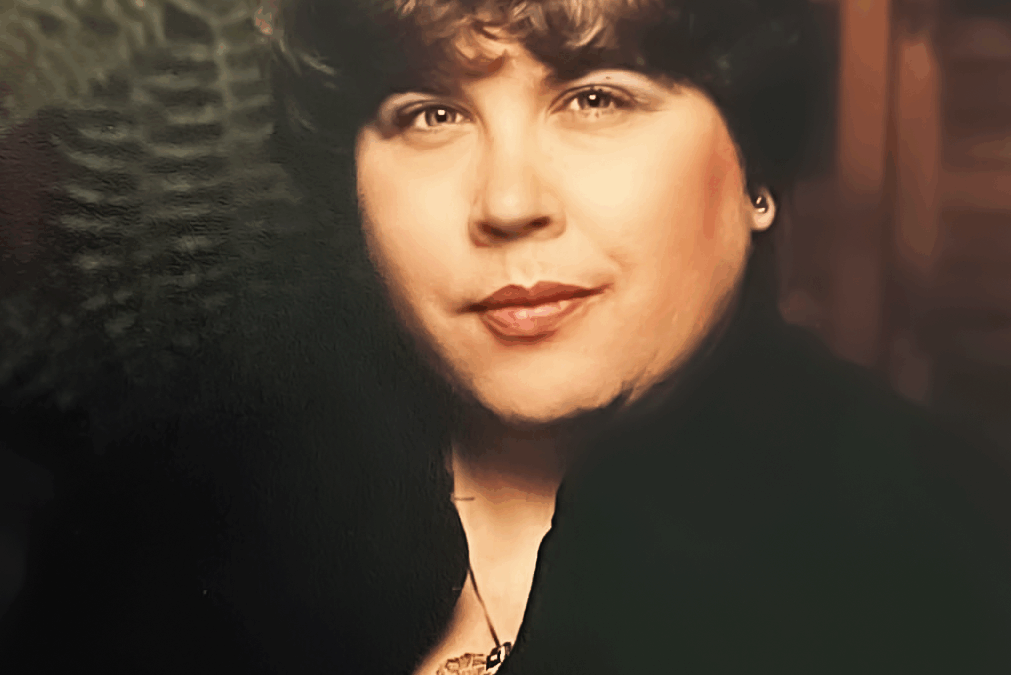
Honoring Esther’s Legacy of Love and Giving

Esther Fay Sayler
Esther grew up on a small dry-land farm in rural central Kansas, where hard work and family values shaped the life she would go on to live. She married her high school sweetheart, a farmer, and together they built a life rooted in love, resilience, and community.
For a time, Esther taught junior high English before staying home with her two children. When they were old enough, she returned to school to earn her master’s degree in psychology, beginning a long career dedicated to helping others as a psychologist.
Her children fondly remember summers spent traveling together, often to Colorado but sometimes all the way to the coasts, as well as lively gatherings at their home filled with laughter, card games of ten-point pitch, and annual Fourth of July celebrations.
Music was one of Esther’s deepest passions. A gifted musician, she played the piano, organ, and baritone, sharing her talents with her church, its choir, and at countless weddings and funerals. She continued to play piano well into her final days. Esther was also a gifted writer, capturing moments of farm life, family, and personal reflection through short stories, poetry, and three published books.
Above all, Esther loved her family deeply, especially her granddaughters, who were the light of her life. Known for her quick wit, her warmth, and even her famous
potato salad, she brought joy wherever she went.
Esther chose to be a donor, a decision her family proudly honored. “It makes perfect sense for her to continue that legacy even after death,” her daughter shared. “She spent her life helping others—through her work, on the farm, with her family, and even in retirement sewing hundreds of dresses and comforters for those in need.”
Esther’s story is one of service, creativity, and love that continues to ripple outward. Her words, like her life, remain a gift. To close, her family shared her last poem as a way of honoring her voice and memory:
A NEW RHYTHM – written by Esther Fay Sayler in June of 2025 (1948-2025)
“Flow”
“Gush”
Origins for our word “rhythm”
Rhythm is Inherent in nature’s music
The courtship of birds
The distant rumble of jungle elephants
The snarl of a dirigible
The vibration of a 32 foot organ pipe
Rhythm is inherent in life’s music too
Ecclesiastes speaks to it
“A time to be born…”
“A time to plant…”
My early life had a rhythm
Get up
Get dressed
Work
Rural Kansas Mennonites had a rhythm
Everyone does, I suppose,
For us
Plant Turkey red wheat seeds in the fall
With faith they were planted
Surrendering them to snuggle into the black, cold soil
We would wait
Waiting for their time to be born
To sprout in the weak sunshine of early spring
Break out of the blackness
And grow into golden stalks
With wispy white beards
Plump little kernels
Bowing in the Kansas sun and wind
And then- -the triumphal season
Harvest
“A time to reap…”
Certainly a flow
Hopefully a gush
A gush of wheat
Into the combine, the truck, the elevator
Into our daily bread
Harvest rhythm disrupted the regular beat
The regular, measured beat of our lives
A kind of Syncopation certainly
The predictable, routine beat was bent
The sounds different
The bass of men’s voices
Carried across the fields
The combine snarl
The trucks’ pipes rumble and vibration
Powerful
Housework became less important
Food quicker, cooler,
Transportable to the field
Eaten in the shade of wheat trucks
A dance between harvest need and hunger,
A courtship between expediency and weather
Moms drive wheat trucks
Kids play in the wheat
Get by snacking on potato chips and candy bars
For 30 plus years it was my rhythm too
I loved the Kansas jungle sounds
The “exotic” food
The gush of adrenaline
The syncopation of routine life
The rhythm of harvest
For me…
That rhythm is gone now
And many songs silent as well
The elephants are gone
Courtships over
Dirigible broken
Organ pipes silent
I’m old
No longer a part of the jungle
I grieve its loss
I miss the verdant life
Crave the syncopation
I need a map
The directions to a new jungle
The reawakening of a rhythm
A new flow,
A gush of a new, green, growing life
Honoring a Life of Service: 2025 Lions Ambassador of the Year
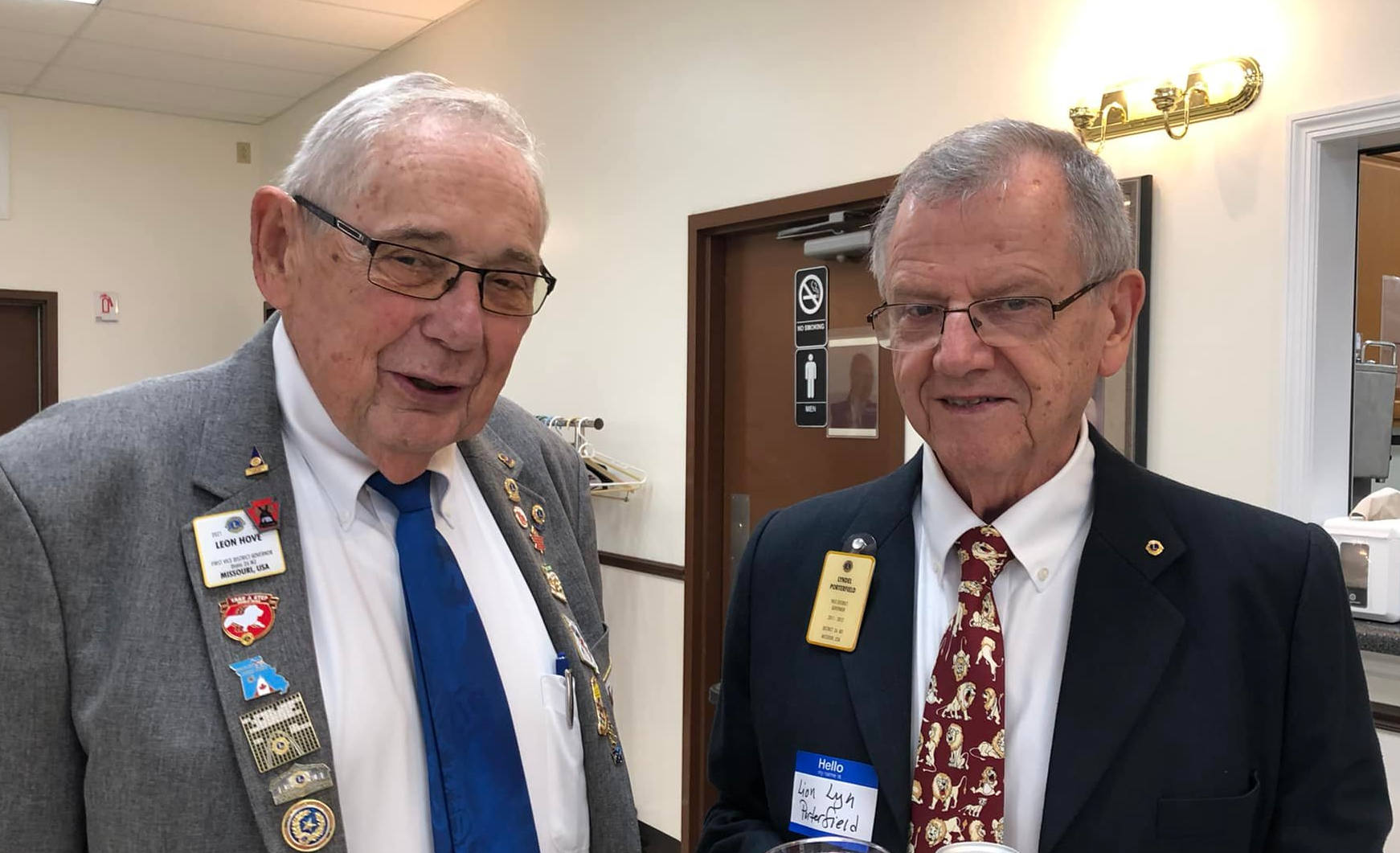
PDG Lion Leon Hove and PDG Lyn Porterfield
This year, Saving Sight is proud to recognize Lion Leon Hove as the 2025 Lions Ambassador of the Year, a title that reflects not only his decades of service but also his enduring passion for helping others see more clearly.
Leon first became involved with the Lions in the mid-1970s through the Joliet Noon Lions Club in Illinois. What began as a suggestion from his boss, a past president of the club, quickly turned into a lifelong commitment. But it wasn’t until Leon screened a child for amblyopia using the old Polaroid method, and saw her again months later, proudly wearing glasses and able to see better, that he truly “became a Lion.”
That moment sparked a passion for vision that has guided his service for nearly 50 years.
“I don’t do the things I do for recognition or awards,” Leon says. “It’s enough for me to see the smiles and joy of those we serve. I receive more pleasure from that than they do.”
Leon has dedicated countless hours to vision programs, including KidSight screenings and international eye missions in Mexico and Panama. In 2018, he helped found the Missouri Lions Eye Mission Foundation, creating a 501(c)(3) organization to expand access to vision care. While COVID-19 initially paused those efforts, the foundation pivoted, and in 2024 alone, the Missouri Lions hosted 37 missions serving more than 2,500 people. The momentum continues to grow, with Lions in neighboring states now seeking to bring similar missions to their communities.
A particularly meaningful milestone came in November 2024, when Leon helped lead a clinic at St. Peter and Paul Church in St. Louis, providing recycled eyeglasses to 33 unhoused individuals.
“That was the start of something beyond my wildest dreams,” he says.
Leon’s commitment to vision is also personal. He saw firsthand the challenges his late wife faced due to corneal disease, and he reflects often on what it would mean to lose the ability to see the people and world around him. Now, at nearly 84 years old, he’s still advocating, volunteering and working toward change — even as he prepares to relocate to Arizona to be closer to his daughter.
“I’ve learned Arizona has laws that prohibit the distribution of recycled eyeglasses,” he says. “That’s my new goal — to help change that. There is such a huge need.”
As part of his ambassador recognition, a $1,000 donation was made to the Missouri Lions Eye Mission Foundation, a gesture Leon says is the most meaningful part of the award.
“The fact that it will help buy equipment and supplies to continue our work means everything to me,” he says. “If being named Ambassador of the Year inspires even one person to serve, that would be the greatest accomplishment of all.”
Supporting Vision: Celebrating the Impact of Saving Sight’s Charitable Grants in 2025
In 1960, Saving Sight began its journey of restoring vision through charitable vision programs, showing a commitment to community needs and a spirit of generosity. While the delivery of our programs has evolved, our legacy of giving continues to thrive through our mission partners. In 2021, Saving Sight’s board of directors established a board-designated quasi-endowment fund to support grants given to charitable organizations with a similar mission. We are proud to share the impact of grants given to four outstanding organizations in fiscal year 2023-2024: Missouri Lions Eye Mission Foundation, KidSight, Show Me Lions Eyeglass Recycling, and Mid-South Lions Sight and Hearing Service.
KidSight – $41,500
KidSight used this grant in general operating support, allowing the organization to expand its free vision screenings and follow-up services for children statewide. So far this year, KidSight has screened more than 43,000 children, an increase of over 4,000 from the previous year, and referred nearly 3,900 to local eye doctors for full exams. The program now serves 100 Missouri counties, up from 94 last year, and continues to grow. With additional grant support, KidSight also partnered with local eyecare providers and hosted mobile vision clinic days in Boone and Jackson counties, delivering 37 free eye exams and 36 pairs of glasses to students in need.
Missouri Lions Eye Mission Foundation – $16,500
Missouri Lions Eye Mission Foundation utilized this grant to purchase new digital fundus cameras and vision screeners—equipment that allowed them to have two sets of identical equipment for events across the state. So far, the foundation has hosted 21 mission events with 19 more scheduled, enabling greater access to care in every Lions district. The new tools have also inspired a renewed sense of purpose and energy among volunteers, strengthening the reach and impact of Lions Clubs across Missouri.
Show Me Lions Eyeglass Recycling – $2,000
Show Me Lions Eyeglass Recycling used this grant to improve building accessibility and enhance warehouse functionality. Upgrades included restroom grab bars, improved signage, and new shelving to better organize recycled eyeglasses. The center also added essential equipment like a pallet jack and hand truck to support the transport of eyeglass deliveries and shipments. Thousands of bags, printer supplies, and cleaning tools were also purchased. Much of the labor and supplemental materials were donated by volunteers, reflecting the center’s deep roots in community support and service.
Saving Sight’s board of directors remains committed to supporting our mission partners in their efforts to restore vision and improve lives. At their most recent meeting in June 2025, Saving Sight’s board granted the following additional funds for the 2025-2026 fiscal year:
• KidSight – $30,000
• Missouri Lions Eye Mission Foundation – $13,000
• Mid-South Lions Sight and Hearing Service – $9,500
• Show Me Lions Eyeglass Recycling Program – $7,500
The grants provided this year have empowered these organizations to expand their services, enhance their capabilities, and serve more individuals in need. We are proud of the collective impact we have made and look forward to continuing our legacy of changing lives by saving sight for years to come.
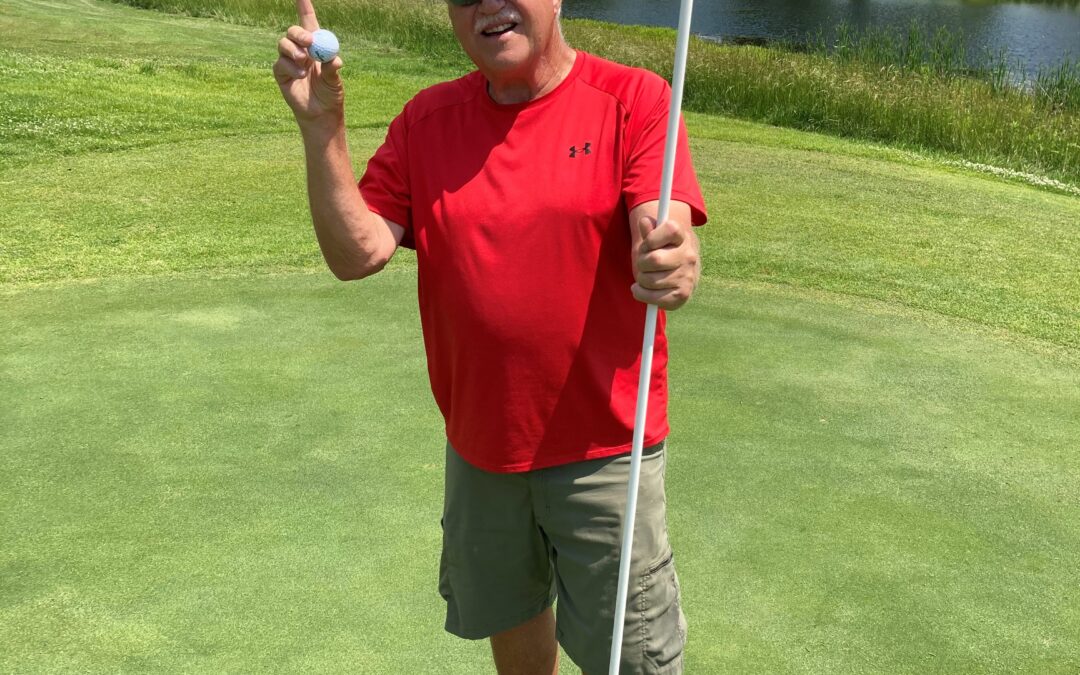
A Father’s Legacy Lives on Through the Gift of Sight
When Dustin received a letter in the mail about his father’s cornea donation, he paused. The logo at the top was instantly familiar: Saving Sight. For years, Dustin has worked with the organization as its financial advisor—helping manage retirement plans and guiding staff through long-term planning. But this was different.
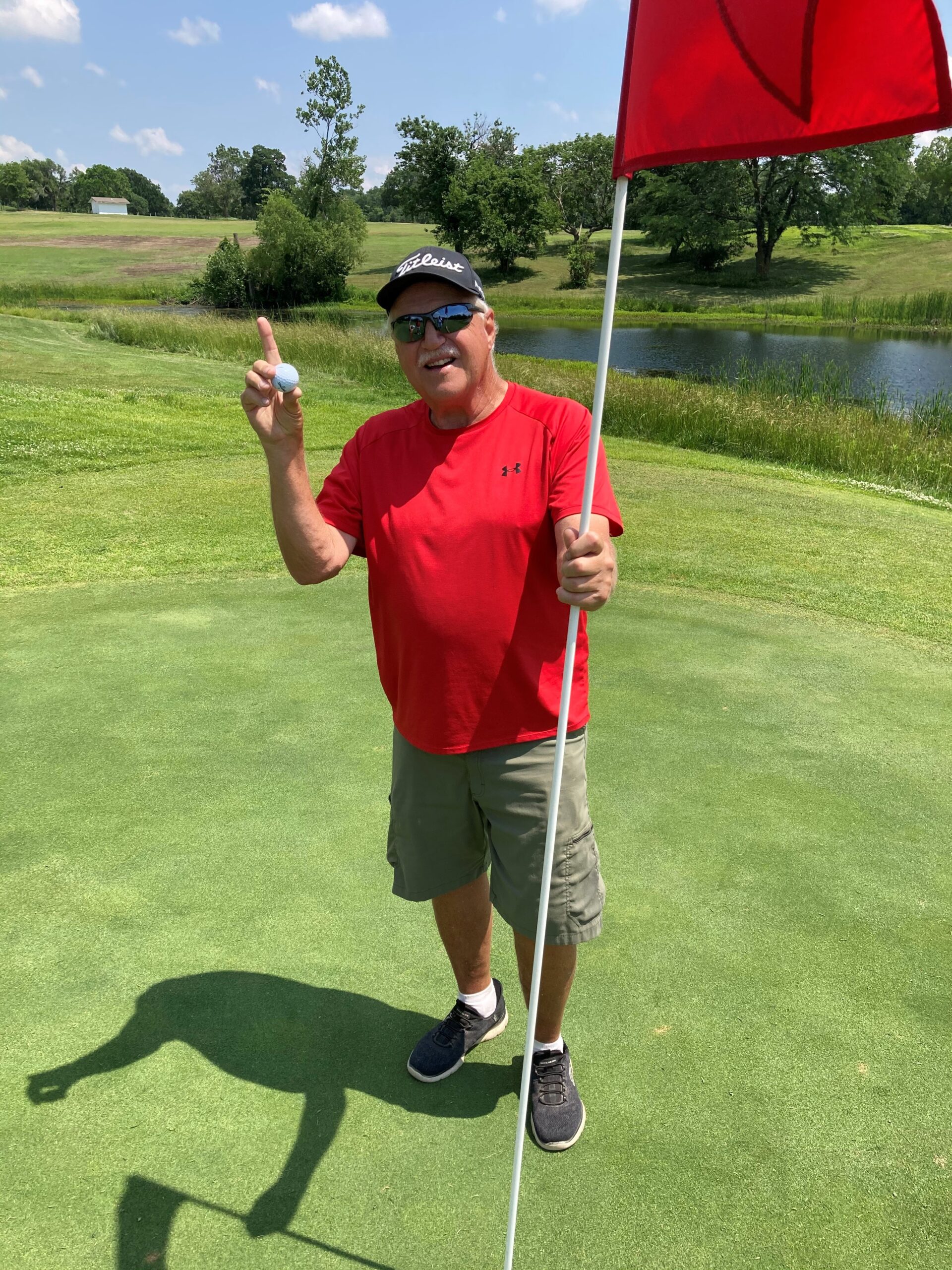
Mark Johnson
“I’ve helped Saving Sight for nearly a decade,” Dustin said. “But to see my dad’s name on a letter from you all—to know he became a donor—it just blew me away. It came full circle.”
Dustin’s father, Mark, passed away in December at the age of 72. In life, he was a devoted husband, father and grandfather, celebrating 50 years of marriage to Dustin’s mother just a few months before his passing. Raised in southeast Kansas, Mark lived a life of creativity, generosity and resilience.
After losing his own father as a young boy, Mark was raised by his mother alongside three older siblings. He met his high school sweetheart—Dustin’s mom—in Independence, Kansas. Together they attended Pittsburg State University, where Mark studied marketing and design. That passion translated into a lifelong career as an artist and business owner. Mark specialized in wildlife oil paintings, lettering, sign work and eventually glass installation.
“Later in life, he bought a glass business,” Dustin said. “He did residential and commercial installs, framing, custom pieces—you name it. Glass kind of became his thing.”
Outside of work, Mark was an avid outdoorsman, antique car collector, and golfer. In his later years, he could often be found on the golf course or visiting his grandkids in Kansas City. Even after surviving a quadruple bypass and a battle with colon cancer, Mark continued to put others first, always finding time for family and friends.
“He would do anything for someone else before doing it for himself,” Dustin said. “That’s just who he was.”
After Mark’s passing, Dustin’s mother received a letter explaining that both of his corneas had been successfully donated and transplanted, restoring sight to two individuals in Pakistan.
“It just stopped me in my tracks,” Dustin said. “To know someone can see the world through his gift—it’s humbling. And knowing that it happened through Saving Sight made it even more meaningful.”
For Dustin and his family, the news was both healing and affirming.
“We’re all givers at heart,” Dustin said. “And if you can help someone—especially when you no longer need what’s being given—why wouldn’t you?”
Today, Mark’s legacy lives on through the lives he’s touched—both near and far. A large mural featuring one of his paintings now graces the side of his hometown’s high school stadium, thanks to donations made in his memory. Dustin is keeping a few of his dad’s classic cars, hoping someday his own son will carry on that tradition.
This Father’s Day, Dustin is reminded of the man who helped shape him.
“I think my dad would be proud,” he said. “Proud to know his final gift gave someone their sight—and proud to know his story might inspire someone else to say yes to donation.”
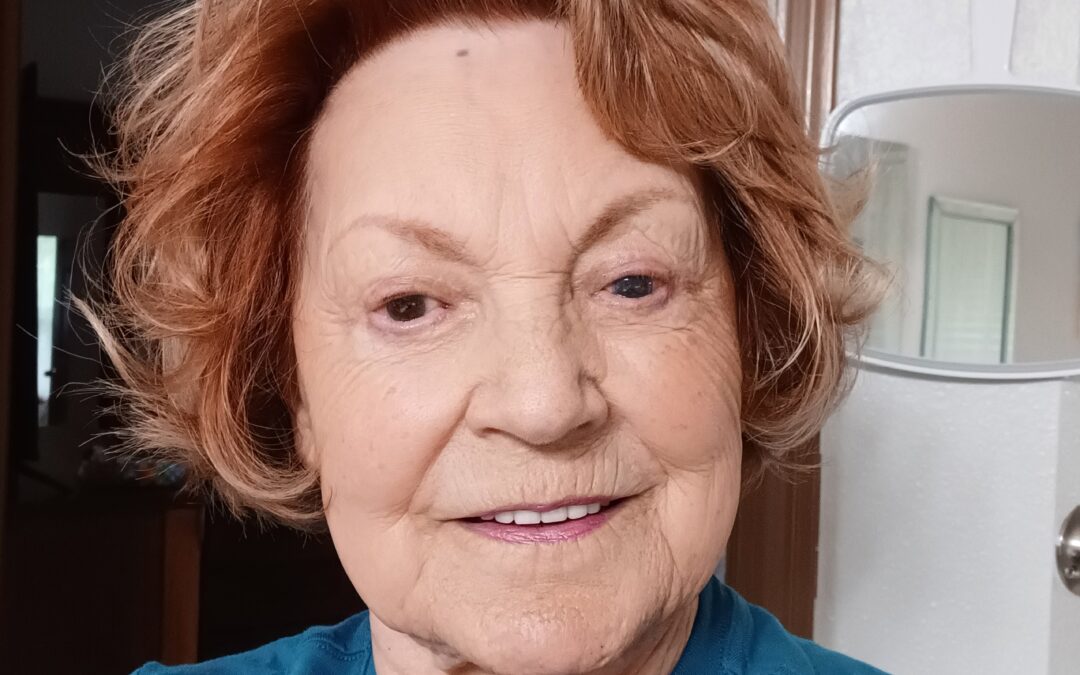
Restored by the Kindness of a Stranger: Sieglinde’s Story
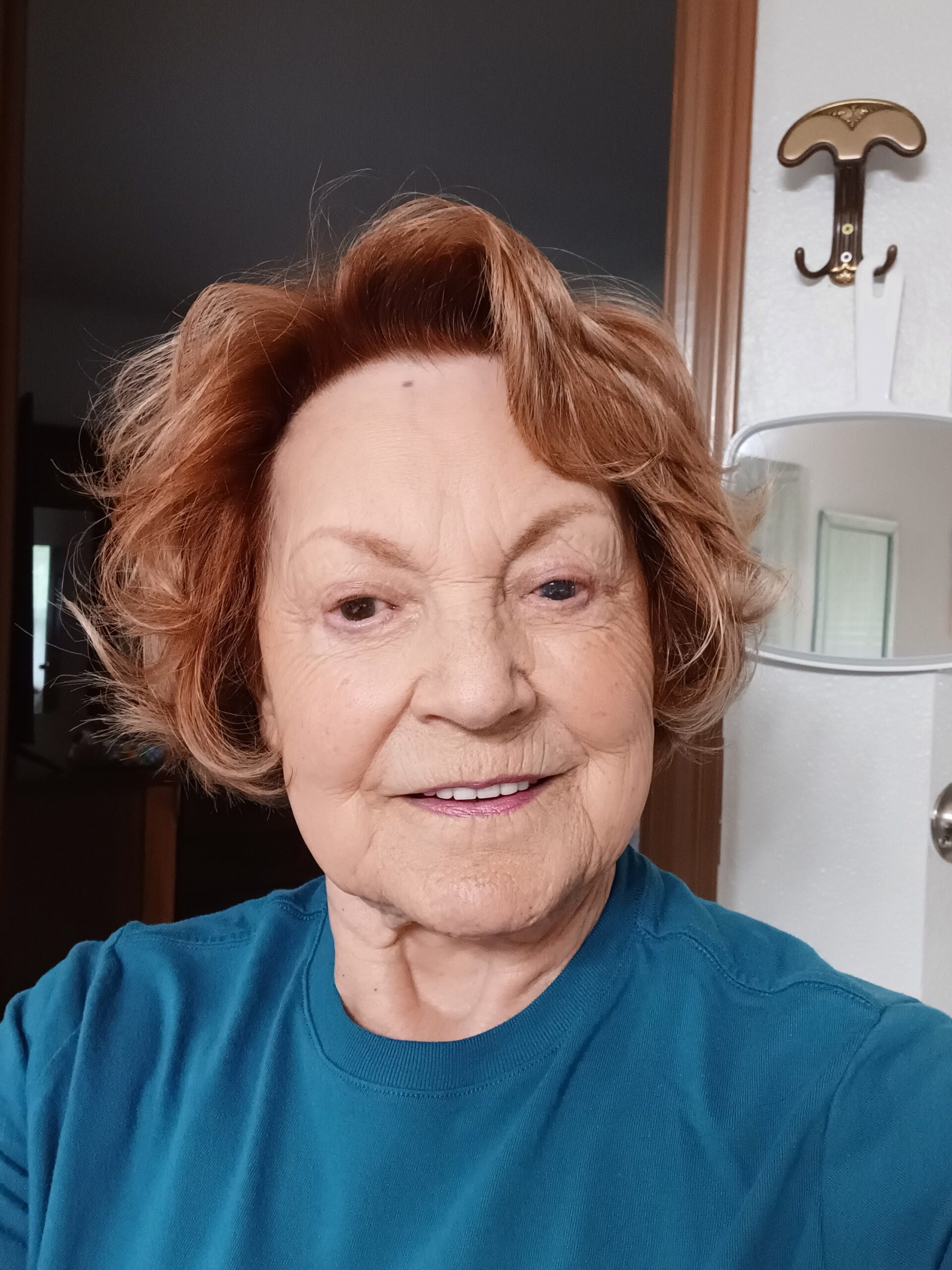
Sieglinde Vest
For months, Sieglinde had been living with excruciating pain and blurred vision in her right eye. “It got so bad I could hardly see straight out of my other eye,” she recalled. Sieglinde endured six months of deteriorating vision and persistent discomfort, trying various eye drops and treatments that offered no relief. After countless eye drops and appointments, she reached a breaking point just before the holidays. “I told my doctor, ‘You have to do something. I can’t take this pain anymore.” Her optometrist told her, “You need something done right away,” and referred her to Dr. Shachar Tauber, who confirmed she needed a cornea transplant immediately.
During her first appointment with Dr. Tauber, Sieglinde remembers asking, “Do you even have any corneas available?’ I thought I’d have to wait months,” she said. “He said, ‘Oh no, we have one right away.’ That was such a relief.”
Shortly after her first appointment, Sieglinde had her transplant surgery scheduled for Christmas Day. “I saw Dr. Tauber on Christmas Day—Christmas morning,” Sieglinde recalls. “I could hardly see out of my other eye, and he saved everything. I told him, ‘It’s a miracle.’ I mean, who does that? Come in at 6 a.m. on Christmas morning to save someone’s sight?” she said. “He’s forever in my heart.”
While she’s still undergoing treatment and hopes for continued improvement, Sieglinde is already thankful for what she’s gained. “The pain is gone, and I can see better than before. When your whole head feels like it’s floating, and then that pain lifts—well, that’s a miracle.”
Thanks to the generosity of a donor and the dedication of her surgeon, Sieglinde’s pain has subsided, and her vision is steadily improving. “I’m eternally grateful,” she shared. “To the family who gave this gift, I just want to say thank you. It’s wonderful that someone would donate so that someone else could see again. I am a donor, and I will do the same.”
Sieglinde’s story is a powerful reminder of the life-changing impact of eye donation. Through one selfless gift, her pain has lifted, her vision is returning, and her spirit is renewed. “I’ll always be thankful,” she said. “Because of my donor, I get to see the world again.”
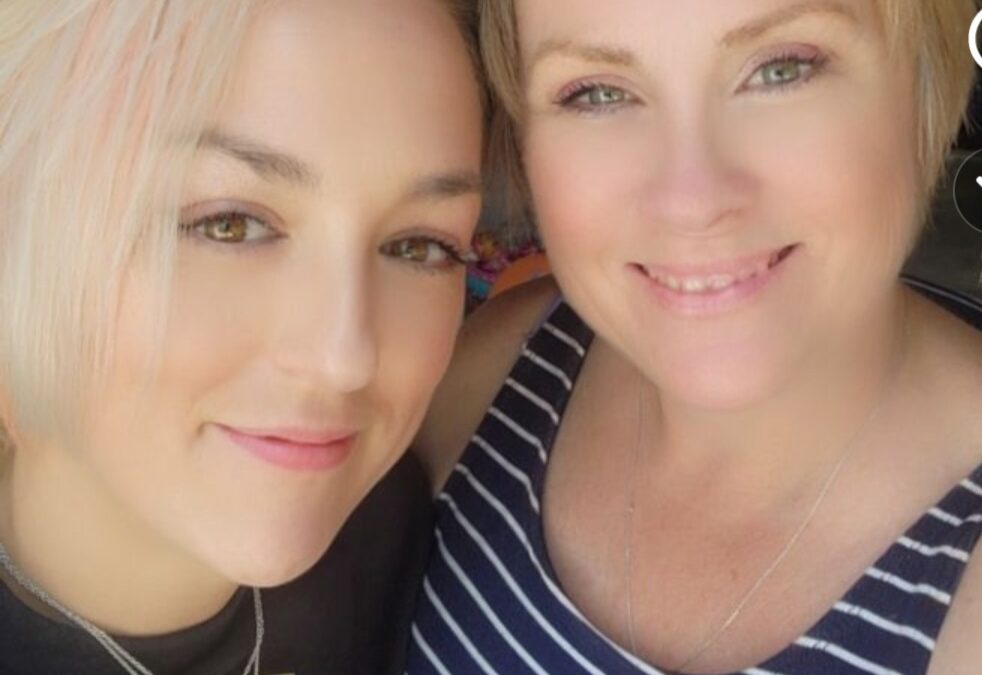
Aleigha’s Light: A Mother’s Love, A Daughter’s Legacy
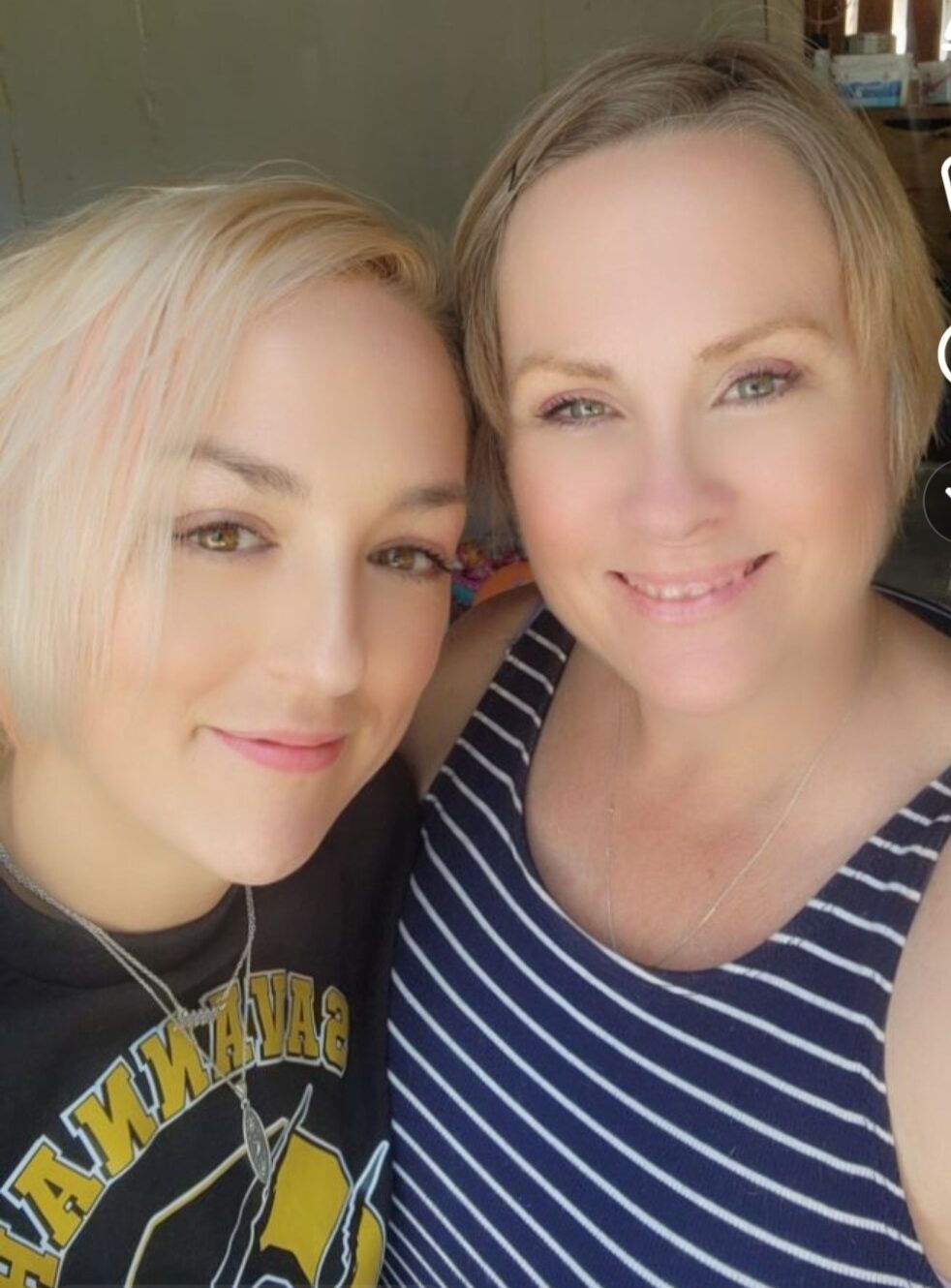
Rebecca and Aleigha
Aleigha was the kind of person who always put others first. Sensitive and kind-hearted, she never hesitated to help someone. From a young age, Aleigha was outgoing, funny, and full of life. She loved watching her younger brother’s football games with her mom, laughing and cheering from the sidelines. She grew into a compassionate young woman, and though she once dreamed of becoming an EMT, her path shifted with love and motherhood.
She found joy in the simple things—quiet rides on dirt roads, music playing through the speakers, her daughters giggling in the back seat. Aleigha adored her two young girls, Jazzlyn and Jayde. They were her pride and joy. Moments like those were full of connection, love, and happiness.
When her family learned that Aleigha could become a cornea donor through Saving Sight, they felt both the shock of loss and the comfort of purpose. “Deciding to donate was an honor,” her mom, Rebecca, says. “Knowing that Aleigha selflessly shared a part of herself to brighten a stranger’s life has been a true blessing.” Aleigha’s family found comfort in knowing her legacy would live on as a donor hero. Her mom, Rebecca, shares, “Being a donor family is an honor. Knowing that a loved one can give all they have for strangers and that those strangers are flourishing is a blessing.”
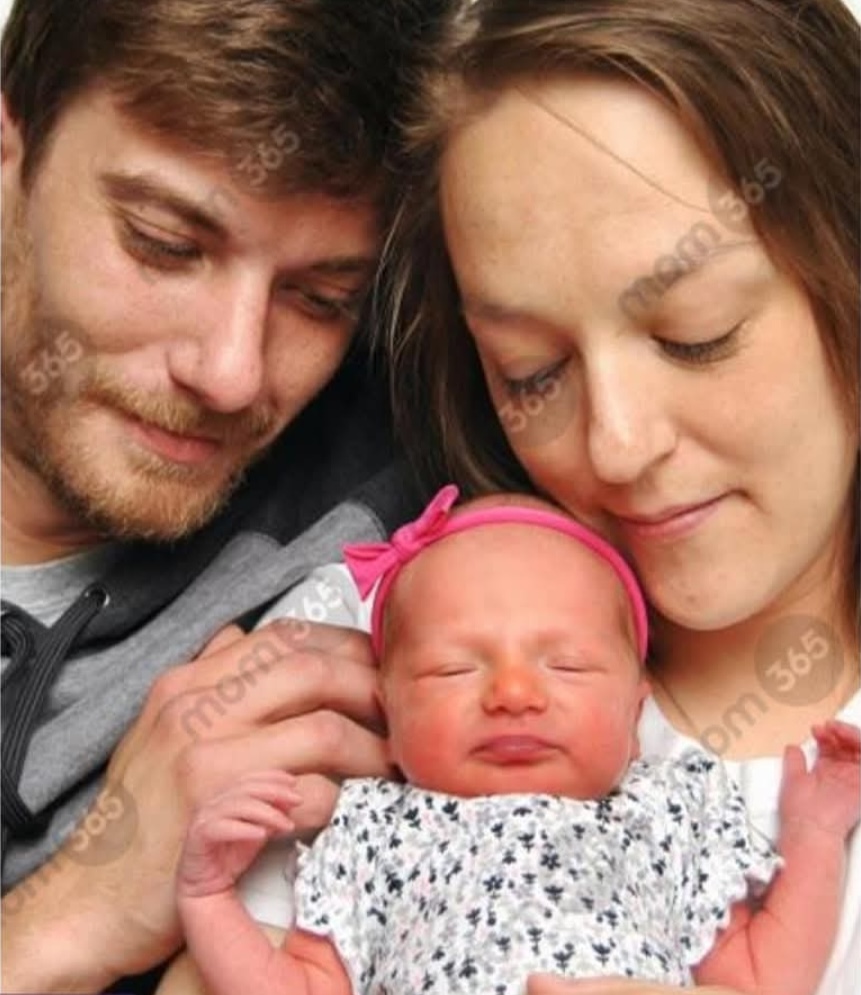
Aleigha and family
Her mother now honors her by sharing her story whenever she can and attending events celebrating the gift of eye, organ, and tissue donation. “It brings us joy to be in contact with her recipients,” she says. “Knowing she’s still here in a way you can cling to mentally and emotionally.” It’s through those connections that Aleigha’s family has found an unexpected comfort. Each thank-you note is a reminder that Aleigha’s light endures, sparking new beginnings in eyes and hearts she’ll never meet.
In the months following Aleigha’s donation, Rebecca found solace and solidarity within the tight-knit donation community. Rebecca enjoys going to donor remembrance events, where she meets fellow donor families who understand grief’s quiet ache and the profound pride that comes with giving life to strangers. “We can be there for each other. Even though we are all strangers in this walk of life, we all have a commonality,” her mom, Rebecca, shares. Thanks to their warmth, she discovered that although every loss is intensely personal, the shared compassion of fellow donor families can turn grief into a celebration of hope and healing.”
“To fellow donor families, she offers this comfort: ‘When uncertainty feels overwhelming, hold on to hope. I envision my daughter’s spark living on in others—illuminating their lives just as it did ours.”
This Mother’s Day, we honor Aleigha, her giving spirit, and the strength of her mother, Rebecca, who continues to share her daughter’s light with the world.
In Clear Focus: Lonna’s Story of Sight Restored
For Lonna, a cornea transplant meant the difference between a life half‐seen and life brought back into clear focus. Her journey began when routine eye discomfort revealed a deeper problem: a scarred cornea that made everyday life “very fuzzy,” she said, and left her legally blind in one eye.
Her ophthalmologist referred Lonna to Saving Sight corneal surgeon partner Dr. Thomas in Springfield, MO, and Lonna didn’t hesitate. “I wanted it right away,” she recalled. Tests confirmed that without intervention, she risked losing vision permanently. Within weeks, Lonna sat in the operating room—awake but at ease—watching the team at work.
The procedure took less than 30 minutes, and Lonna felt almost nothing. By her first follow-up, she’d read two more lines on the eye chart. “I have had zero issues, and it’s just been amazing,” she said. Six months later, Dr. Thomas told her the transplant was “textbook perfect.”
Lonna’s renewed sight has already changed her daily life. She’s back to reading books before bed and driving to her grandchildren’s school plays without hesitation. But more than that, she’s rediscovered the simple joys she once took for granted—like watching the sunrise in her backyard. “I couldn’t see well at all,” she said. “Now I notice every leaf on the trees.”
Throughout her recovery, Lonna has carried deep gratitude for the donor hero who made her new cornea possible. “Someone selflessly gave me the gift of sight,” she said. “It’s overwhelming.” That gratitude, she hopes, will inspire others to register as donors. “You might be able to change someone’s world just by checking that box,” she said.
Lonna’s journey reminds us that a single choice can have a lasting impact. “I tell everyone: sign up for the registry, you never know whose life you could change,” she said. Through her restored sight, she hopes countless others will discover that same gift—and that more lives will be brought into focus.
Get the Latest in Your Inbox
Sign up below to receive Saving Sight’s quarterly round-up of industry news straight to your inbox. We will never share your information with third parties and you may unsubscribe at any time.


